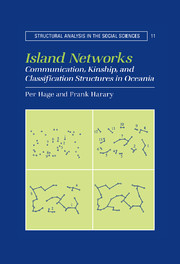4 - Search trees: I
Published online by Cambridge University Press: 06 August 2010
Summary
Thought is a labyrinth; and topological thought, which sprang originally from the brain of Leonhard Euler (1707–83), gives us our best analytical approaches to the mazes of our recreation and our technology: the left-turn rule, the depth-first search. Such labels seem to announce little tinny formulas. Do not be misled, though. The formulas lift us, like the wings of Daedalus, out of everything labyrinthine, for an overview.
Hugh Kenner, MazesIn Social Stratification in Polynesia, Sahlins (1958) identified three basic forms of social organization found in Polynesian societies – the ramage, the descent line system, and interlocking organization – interpreting each as an adaptation to a specific type of island environment. Sahlins's study was directly inspired by Kirchhoff's (1955) discovery and evolutionary interpretation of an internally stratified type of descent group known as the “conical clan,” which Sahlins, following Firth (1936), called the “ramage.” Anthropologists, although they generally reject Sahlins's ecological interpretation, acknowledge his achievement in revealing the conical clan as the basic structural form of many Polynesian societies (Goodenough 1959; Hogbin 1959). Some archaeologists and linguists now view the conical clan genetically, as a component of Ancestral Polynesian Society (Kirch 1984a; Kirch and Green 1987; Bellwood 1978; Pawley 1982). Given the ethnographic and theoretical importance of the conical clan, it is surprising to discover that this structure has never been clearly defined. Kirchhoff characterized the conical clan only in general terms, and although Sahlins was more specific, defining it in terms of a rule of succession, his definition is imprecise and not applicable to all societies in Oceania or elsewhere in the world.
- Type
- Chapter
- Information
- Island NetworksCommunication, Kinship, and Classification Structures in Oceania, pp. 90 - 124Publisher: Cambridge University PressPrint publication year: 1996



